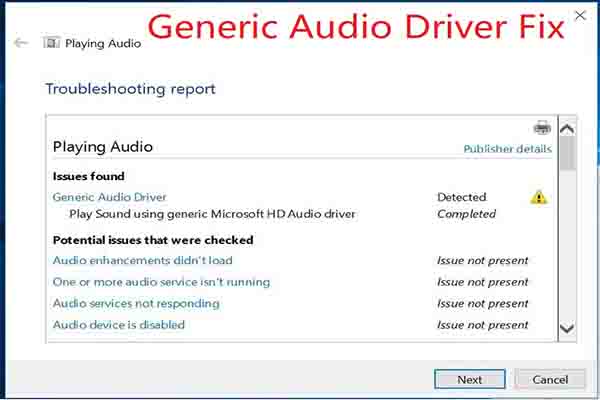

Unlike the connection between an adapter and an external bus such as USB or the IEEE 1394 bus, the connection between an endpoint device and an adapter device does not support PnP device detection. During device enumeration, the Plug and Play manager identifies the devices in the audio adapter and registers those devices to make them available for use by the operating system and by applications. The adapter communicates with the system processor through a system bus (typically, PCI or PCI Express) or external bus (USB or IEEE 1394) that supports Plug and Play (PnP). For example, an audio endpoint device such as an external microphone or headphones lies at one end of a cable whose other end plugs into a jack on an adapter device. The user plugs in and unplugs these external devices. Other endpoint devices might connect to an audio adapter through audio jacks. Typically, the user does not physically remove these endpoint devices. For example, a computer might contain internal devices such as a CD player, a microphone, or speakers that are integrated into the system chassis. Some endpoint devices might permanently connect to an adapter device. Windows Vista simplifies the design of user-friendly applications by directly supporting the endpoint device abstraction. Typically, the user interfaces of audio applications refer to audio endpoint devices, not to adapter devices. Input controls device (contains volume control and multiplexer).Wave input device (contains analog-to-digital converter).Output controls device (contains volume and mute controls).Wave output device (contains digital-to-analog converter).The following are examples of adapter devices: In the preceding diagram, the following are examples of endpoint devices: The following diagram shows how audio endpoint devices differ from adapter devices. To avoid confusion with endpoint devices, this documentation refers to a device on an audio adapter as an adapter device.
#WHAT IS AUDIO ENDPOINT DRIVER WINDOWS 10 SOFTWARE#
Users are more likely to think in terms of endpoint devices that they directly manipulate rather than in terms of the devices on audio adapters that the endpoint devices plug into or in terms of the software components that process the audio streams that flow to and from these adapters. Although these components are essential to the operation of the endpoint device, they tend to be invisible to users. The audio data that moves along the data path might traverse a number of software and hardware components during its journey between the application and endpoint device. Examples of audio endpoint devices are speakers, headphones, microphones, and CD players. The term endpoint device refers to a hardware device that lies at one end of a data path that originates or terminates at an application program.


 0 kommentar(er)
0 kommentar(er)
